Search Images
Browse Content (p. 1163)
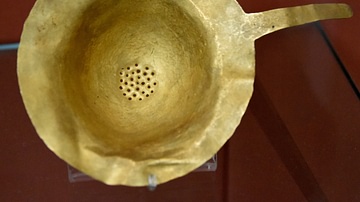
Image
Mesopotamian Gold Strainer
This gold strainer was roughly shaped and has a short handle. It was found at the bottom of the pit of Queen Puabi's grave. Beer and wine were drunk in Mesopotamia from at least the fourth millennium BCE and it is possible that the strainer...
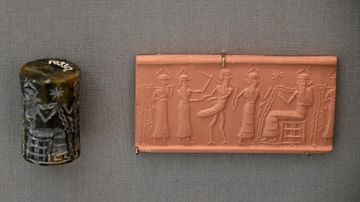
Image
Anzu as a Captive Before Ea
This cylinder seal depicts a scene of Anzu and Ea. On the left, a bearded god wearing a horned headdress and a striped kilt holds a branch of vegetation in a cleft stick (or a plough) over his shoulder. Next to him, another and similarly...
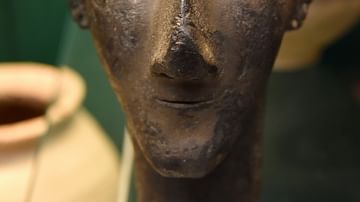
Image
Copper Alloy Female Mask
This is a copper alloy mask which was part of a woman's statue. The eye sockets were inlaid. The chin is long and sharp. The forehead continues upward as a central tang (now broken off). There are two holes at the sides of the upper part...
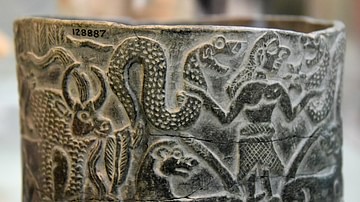
Image
Chlorite Vessel Illustrating a Mythological Scene
Circular chlorite box decorated with a mythological scene, made in modern-day Iran, but said to be from Khafajeh (Tutub), modern-day Iraq. Early Dynastic Period, 2600-2400 BCE. The scene depicts a standing female with long plaited hair...
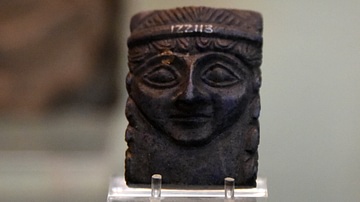
Image
Lapis Lazuli Plaque in the Shape of a Woman's Face
This lapis lazuli inlay was carved in the shape of a woman's head and is quadrangular. The back is flat except for two straight incised lines continuing the line of the headband on the face. Height 3.2 cm; width 2.2 cm; and thickness: 1.1...
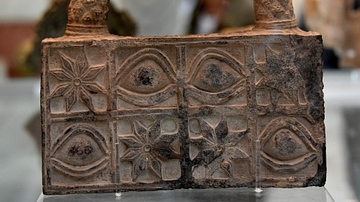
Image
Mesopotamian Carved Stone with Integral Handle
This carved grey stone has an integral handle. It was possibly a weight. There are eight compartments decorated with the shapes of eyes and rosettes. The handle imitates basketry and is ornamented with lozenges in relief. The stone might...
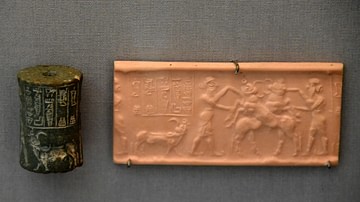
Image
Cylinder Seal Showing a Contest Scene
This green jasper cylinder seal depicts a contest scene. At the centre of the scene, there is a pair of crossed bulls; each one is being attacked by a standing bearded hero. The heroes have a double bun hairstyle. They wear a wrap-over kilt...
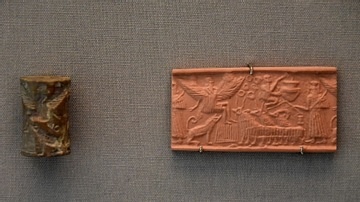
Image
Myth of Etana Cylinder Seal
This calcite cylinder seal depicts the myth of Etana, the shepherd and the legendary king of Uruk, who was carried up to heaven by an eagle to obtain an heir. Etana's ascent is watched by the shepherd and his dog, with two markhor-type goats...
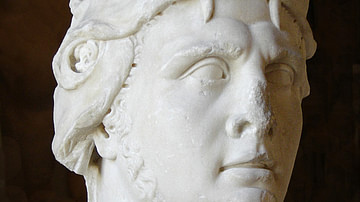
Image
Mithridates VI
Mithridates VI ruled Pontus and Armenia minor 120-63 BCE. Here, he is depicted as Heracles wearing the skin of the Nemean Lion. (Louvre Museum, Paris)

Image
Orontes II
Gold coin depicting Orontes I of the Orontid Dynasty, who ruled Armenia from 401-344 BCE. Coin dates to 362 BCE. (Bibliotheque National France)
There is some contradiction as to whether this is actually Orontes I or Orontes II.